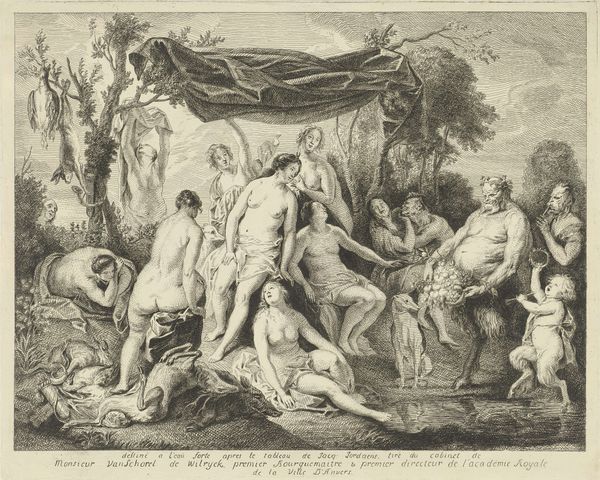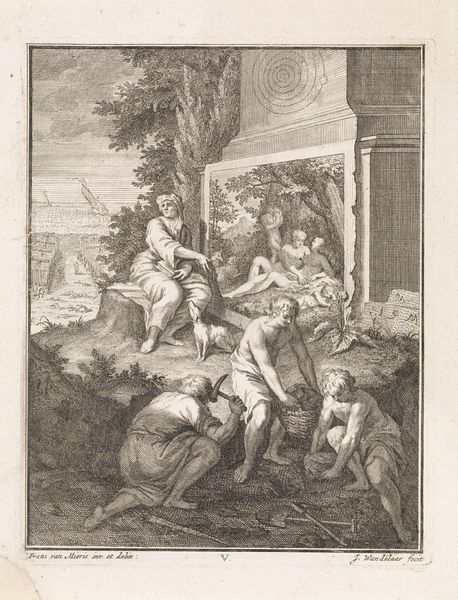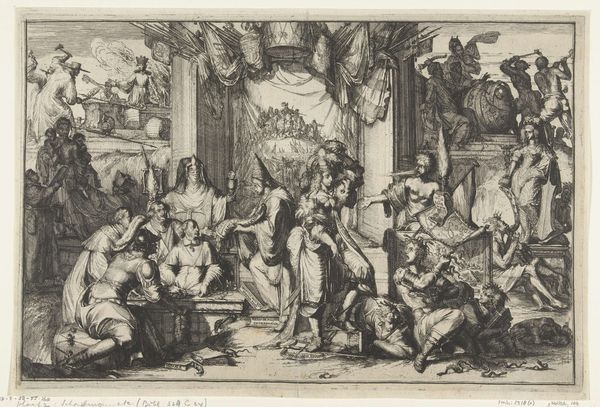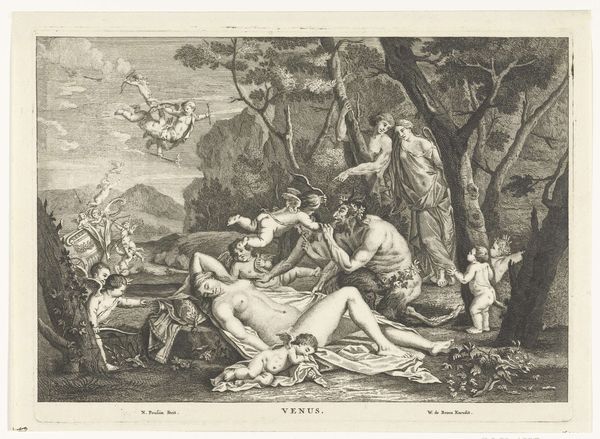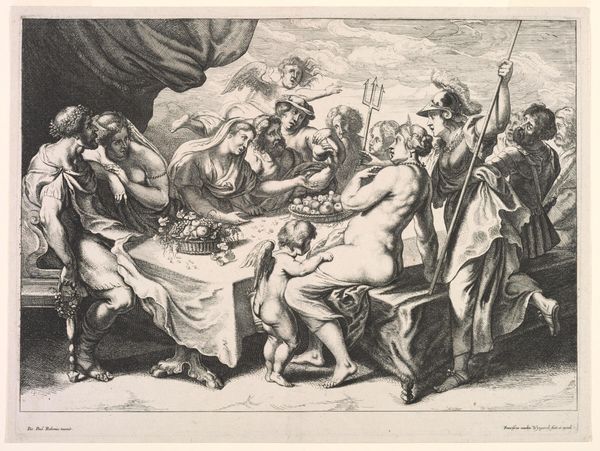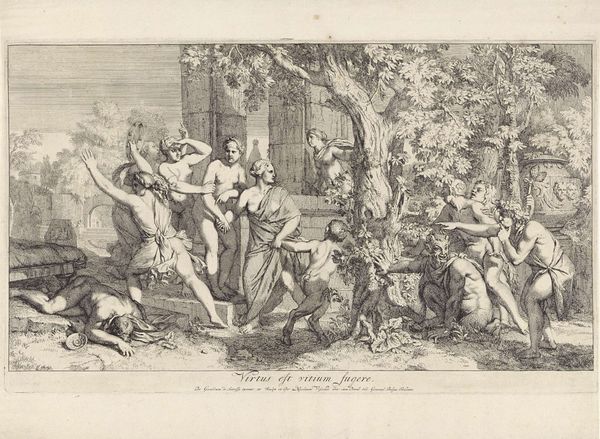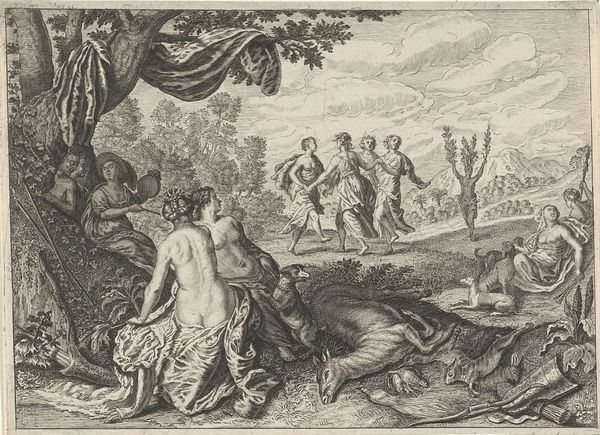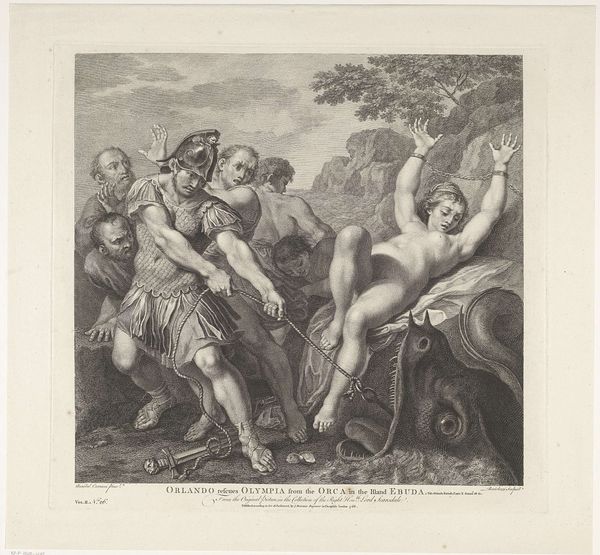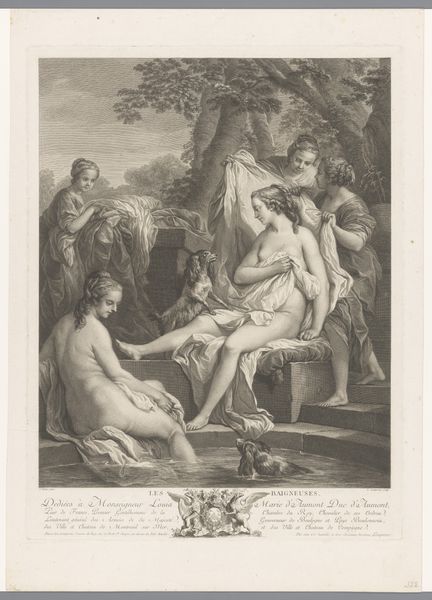
print, engraving
#
allegory
#
baroque
# print
#
landscape
#
genre-painting
#
history-painting
#
nude
#
engraving
Dimensions: height 346 mm, width 583 mm
Copyright: Rijks Museum: Open Domain
Curator: "Small Bacchanal," an engraving dating back to 1685, crafted by Gerard de Lairesse. The scene vibrates with an air of festivity and indulgence. Editor: My initial reaction is a kind of decadent exhaustion, like viewing a snapshot from the messy morning after a rather riotous celebration. There's an almost theatrical quality to it, and a heavy sense of languor despite all the implied activity. Curator: Bacchanals, of course, tap into ancient symbols—wine, ecstasy, and the temporary suspension of societal restraints. The engraving medium itself lends a specific symbolic dimension; as a reproducible format, prints democratize images, inviting wider participation in these coded cultural performances. Editor: Democratizing, yes, but also deeply embedded in its historical power structures. Who were these "wider audiences," and what social scripts were they consuming? Are we simply glorifying unchecked privilege under the guise of historical "genre painting"? And those classical nudes were always contentious depictions of women as objects for enjoyment rather than autonomous human beings. How does that resonate today? Curator: Consider, though, the deeper roots. Nudity here speaks to vulnerability, perhaps a collective stripping away of inhibitions. Genre painting isn't only surface-level enjoyment. It's a symbolic language expressing enduring human desires for release, challenging norms even as it depicts a select cultural milieu. The print invites conversation regarding those taboos through time. Editor: The inscription supports your argument somewhat, emphasizing freedom from care, if I'm understanding it correctly: "Neither night, nor love, nor wine suggest anything meretricious: there is no need for shame here; Liber removes fear." However, whose "fear" is being removed? Are all participants truly free and equal, or are certain bodies and perspectives foregrounded at the expense of others? Curator: An excellent point. Visual elements such as the figures' gestures can reveal complex interpersonal dynamics, and suggest how symbolic messages were perhaps negotiated in early modern reception. It’s fascinating to consider how varied interpretations may resonate even centuries later, as cultural values inevitably shift. Editor: Yes, our task is not to canonize the past, but to encourage critical engagement with its legacy, to use images as catalysts for imagining more inclusive futures. What endures is our human aspiration toward agency and self-expression, despite systemic limitations that we still encounter.
Comments
rijksmuseum about 2 years ago
⋮
De Lairesse here seems primarily interested in cautioning the viewer against the unpleasant consequences of abusing alcohol. Part of the company is roaring drunk. In the middle a woman, mouth open, sleeps off her hangover. Freely translated, the Latin text reads: ‘Night, love, and wine counsel no halfhearted measures. The first knoweth not shame, Bacchus and love know not fear.’
Join the conversation
Join millions of artists and users on Artera today and experience the ultimate creative platform.
